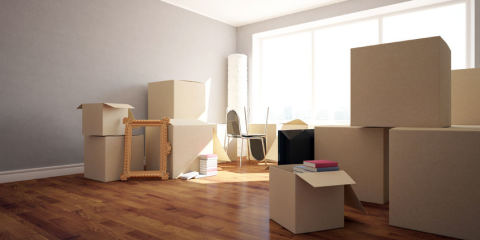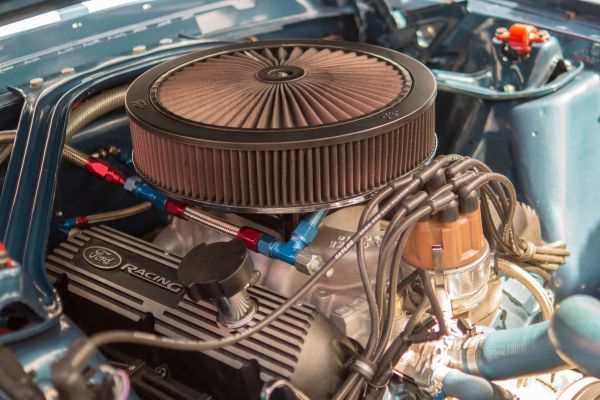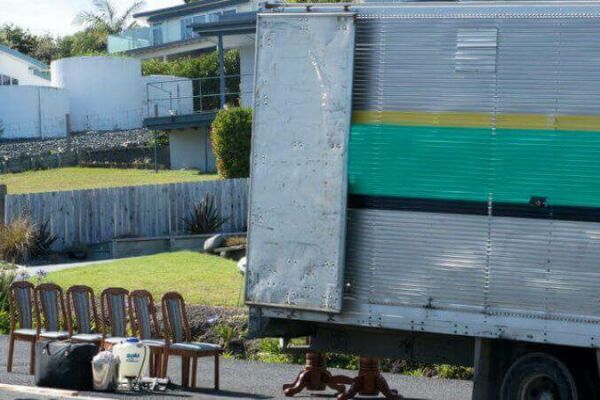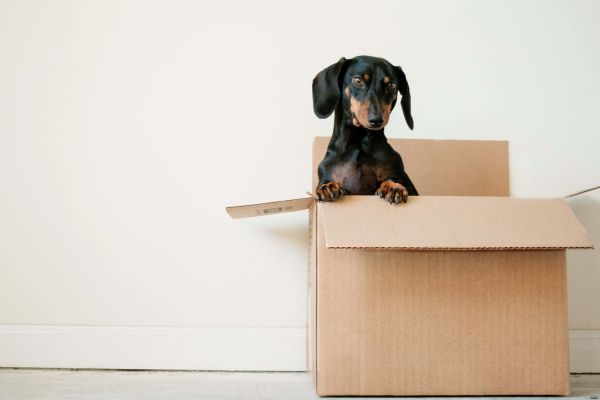About 35 million Americans move to new homes every year, and countless more ship fragile belongings for other reasons. Whether you're moving long-distance, are gifting heirloom furniture to your kids, or are an antique dealer shipping items to buyers around the country, shipping fragile or valuable items always takes special care.
Although insurance may pay for an injured item, it won't make up for the emotional value of an heirloom or enable you to replace a one-of-a-kind painting or priceless antique. The key to keeping your valuables from becoming a statistic is to pack them properly and choose the safest shipping method.
If you've never shipped fragile or valuable items before, such as antiques, heirloom furniture, or artwork, you may have some questions about how to pack and ship your items. We're here to help!
1. Find a qualified shipping company
Standard moving companies or the US Postal Service may not be experienced with or qualified to pack and ship fragile or valuable items. When you're shopping for a shipping service, look for a shipping company that has experience transporting items like yours. The best shipping companies can help you move:
- Valuable art, including paintings and sculptures
- Framed wall hangings
- Wine glasses and china
- Mirrors
- Shipping grandfather clocks
- Pianos of all sizes
- String basses
- Other large instruments
- Antique furniture
- Glass-fronted cabinets
- Glass-covered tables and desks
- Fragile household decor
Look for two or three companies that are qualified to handle your goods, then move on to step 2.
2. Get a quote
Once you've narrowed it down to two or three potential shipping companies, call each one for a quote. Have important information about your shipment handy when you call, including:
- Approximate weight and dimensions
- The value of your item—get your valuable items appraised, or look online for comparable items to see how much they are selling for to get a rough idea.
- Notes about your location, such as long hallways, narrow doors, or stairs
- Any special considerations your shipping company will need to know about
3. Prepare and pack
When you're shipping fragile or valuable items, the most important thing is to prepare and pack your belongings properly. This includes selecting the right container and the safest cushioning.
How to choose the right container
Some items, including large furniture, armoires, grandfather clocks and pianos can be wrapped in blankets before shipping and do not need a separate container. However, many items should be boxed or crated, particularly if they are extremely fragile or valuable. Items valued at over $2,000 should be crated for maximum protection, and some insurance policies may require this.
Small or medium-sized items and sets, such as china, should be packed together into boxes. Larger items such as furniture or artwork will be transported individually, so you may need to wait until the shipping team arrives before preparing them for transport—some companies won't insure items that weren't packed by their professionals. If you're not sure whether to choose wrapping, crating, or boxing for your shipment, read our guide or contact your shipping company to ask for their advice.
Crates
A well-built crate offers the best protection against shipping damage, particularly for heavy, valuable and unusually shaped objects. A professional moving company such as TSI can assist you in crating and shipping delicate items.
Boxes
If you're shipping your valuable items in a box, follow these guidelines to make sure you select the right box:
- Shipping boxes should be made of heavy corrugated cardboard, and should be strong and resistant to crushing.
- Most boxes have a weight limit imprinted on the bottom flap—always check the weight limit before you pack heavy items into a particular box.
- New boxes are best, but previously used boxes may be used if they are still rigid and in good condition, with no cracks, tears, weak spots, crush damage or missing flaps.
- Old labels should be removed to ensure the box arrives at the correct location and the contents can be identified correctly.
- Choose a box that is large enough for the item you wish to ship and its packaging material. There should be at least two inches between your item and the box on all sides. If the item will be wrapped in a protective material such as bubble wrap, there should be two inches between the outer edges of the protective material and the sides of the box. If multiple items will be packed in a single box, there should be two inches of packing material between each item.
How to choose the right cushioning
Fragile items need plenty of cushioning. Small items such as glassware should be cushioned by at least two inches of shock-absorbent material such as bubble wrap. Arrange items so there is at least two inches of space between each item and the walls of the box, as well as two inches between each item to avoid damage from shock and vibration. Cushioning material should be packed tightly enough to ensure items will not shift in transit.
There is plenty of quality cushioning material available, but not all materials are suitable for all items. Consider the size, shape, weight, substance and type of item you will ship to determine the best packing material to use. If you are uncertain, contact your shipping team for additional guidance. The following materials are typically well-suited to shipping fragile or valuable items.
- Corrugated liners: These can be placed around the interior walls of a box or container to increase strength and protection.
- Crumpled packing paper: When tightly crumpled, this is a suitable way to fill empty spaces inside a box, or to gently pack inside hollow objects such as vases and cups. However, it does not provide sufficient protection for very delicate items.
- Bubble sheeting: Small and large bubble sheeting can be used to wrap delicate items. For maximum protection, wrap items in a layer of small bubble sheeting followed by a layer of large bubble sheeting. This material is not suitable for heavy objects or those with sharp edges. If you're wrapping artwork or glass items, wrap them in packing paper or moving blankets first—bubble wrap can leave marks on glass surfaces.
- Inflatable air bags: These are suitable for void-fill for lightweight items. However, items with sharp corners or edges may tear and deflate air bags. Extreme temperatures can also cause bags to become over or under-inflated, compromising the protection offered.
- Engineered foam enclosures: Foam enclosures can be pre-engineered for specific products. It is very protective, but can be expensive.
- Foam-in-place/Foam-in-bag: This foam can be sprayed into a box or bag. The foam expands to form a tight, protective mold around the contents. It must be applied correctly to be effective. It is extremely protective, but can be expensive, particularly for large items, which require a great deal of foam.
Not all soft material is appropriate for cushioning. The following are commonly used, but in fact make poor cushioning material, and are not recommended by professional moving companies:
- Blankets
- Towels
- Pillows
- Newspaper
- Clothing
- Rags
- Packing peanuts
After you pack and cushion your belongings, give the box a very gentle shake before sealing. Materials should not shift—if they do, add some more cushioning. Be careful not to over-fill boxes, as delicate items can be broken by excessive pressure.
How to pack boxes
For items being packed into boxes, use these five steps for correct packing technique:
1. Wrap each item individually
Disassemble anything you can take apart and wrap each piece individually in padding, such as bubble wrap, to keep it from knocking against other items. Secure the bubble wrap in place with high-quality packing tape.
When you're wrapping glass, wrap each item in packing paper (such as brown paper or newspaper) first to protect it from direct contact with bubble wrap—bubble wrap can leave marks. Secure the packing paper with tape, then add a thick layer of bubble wrap.
When packaging picture frames, mirrors, framed photographs or other artwork, remember to apply corner protectors before wrapping. Wrap the frame in moving blankets, then a layer of bubble wrap. Use tape to secure padding after each layer.
2. Pad the inside of the box
Use bubble wrap to line the box (both the bottom and the sides) so that wrapped items are further cushioned against vibrations and any possible bumps. Crumpled up packing paper can also work. After completely filling the box, you can also add a layer of wrap to the top before closing the lid.
| PACKING TIP: Never use packing peanuts to ship fragile or valuable items—they can shift to the bottom of the box during transit. |
3. Place items inside
When packing the wrapped items inside your lined box, you'll want to give them plenty of elbowroom. When you're positioning fragile, flat items (such as vinyl records, glass-fronted picture frames, and china plates or platters), stand them upright rather than setting them horizontally.
4. Fill all empty space
Now that your belongings are packed, it's time to fill the extra space in the box. If you leave this space empty, the wrapped items will be thrown around each time the box moves. Use a material such as crumpled packing paper to fill the empty space and disperse any shocks.
5. Close and label the box
When you close the lid, use plenty of packing tape to seal it shut. You can also use tape to reinforce any other corners or seams on the box, especially if they don't look as strong as you'd like. Finally, use a permanent marker to write a "FRAGILE" warning in large letters on each side of the box.
Once packed, boxes should be stacked with the heaviest boxes on the bottom and the lightest boxes on top to prevent crushing and damage to fragile items. Boxes should be arranged in a way that prevents shifting, sliding or toppling. Some companies may even stack boxes and shrink-wrap them into a single unit to prevent movement in transit.
4. Pickup
When your shipping team arrives at your place for pickup, they should be able to answer any last-minute questions you have about the process. Before they begin transport, they'll help you make sure your items are safe to move. Boxes are relatively simple, but large items may require some disassembly and special handling. Examples include:
- Grandfather clocks, which should be stopped and have their pendulums and any shelves removed before they're wrapped
- Pianos, which need to have lids closed and locked, legs removed and sometimes further disassembly (depending on type)
- Antiques and fragile furniture (such as glass-fronted cabinets), which may need to be transported in a crate
Some antiques may need to be crated at the warehouse, but the best shipping companies will be able to prepare them for shipment right where they are. Only when all items are safe to ship and thoroughly wrapped (or crated) will the crew move them to the truck.
Shipping fragile and valuable items with TSI
We specialize in shipping fragile items. Our company has decades of experience, giving us several advantages over other shipping companies:
- Expertise gained from handling thousands of fragile items successfully
- The finely honed skills needed to ensure that your valuables reach their destination safely
- Affordability and great value for the price
- Personalized attention to your shipment
- Extras such as packing advice and help estimating weights
- Wonderful customer service
- High ratings and a great reputation
- Availability—we ship all over the USA
Conclusion
If you're feeling nervous about how your valuables will fare in an upcoming move, don't just hire a moving truck and hope for the best. Get a free, no-obligation quote tailored to your situation by calling today or filling out our online form. Whether you're moving a collection of antiques to your new home, sending an expensive gift to a loved one, or moving a piano up a flight of stairs, no job is too large or too small for our personalized care and protection.




